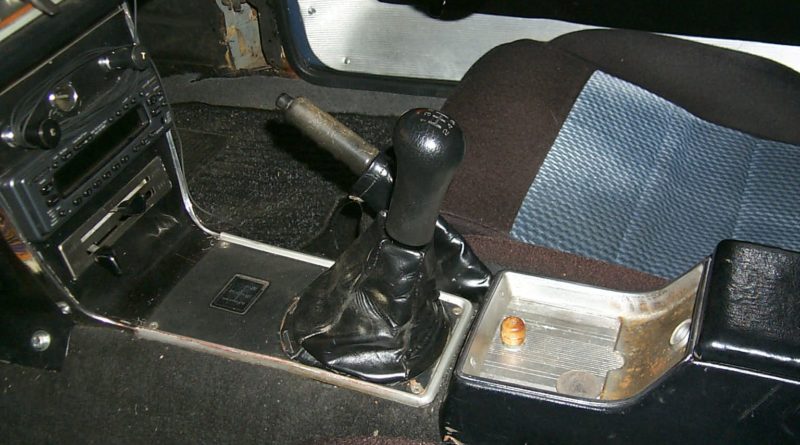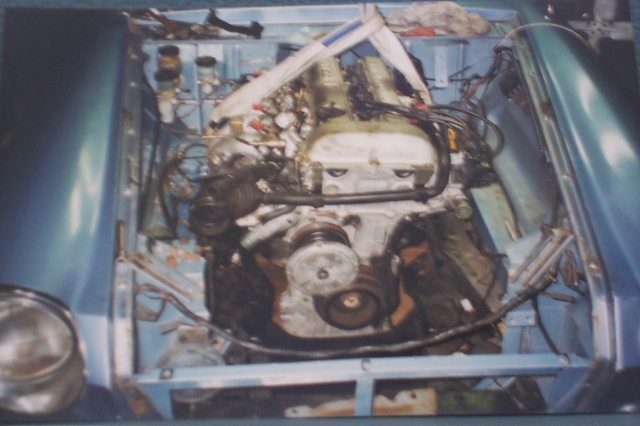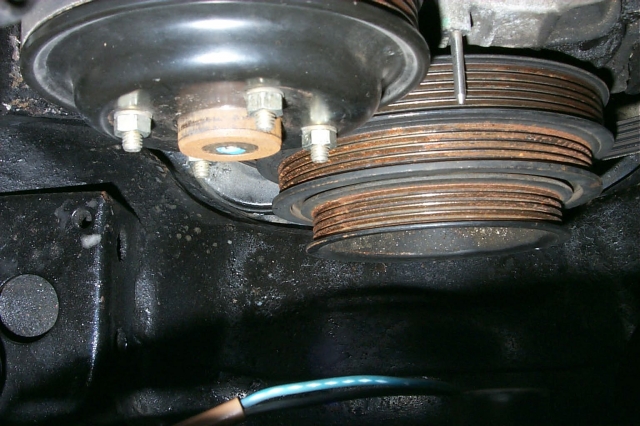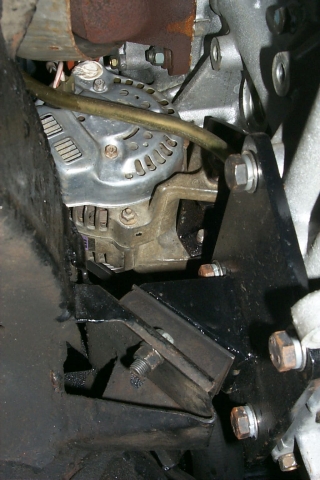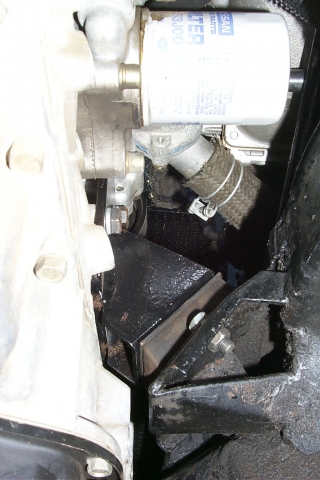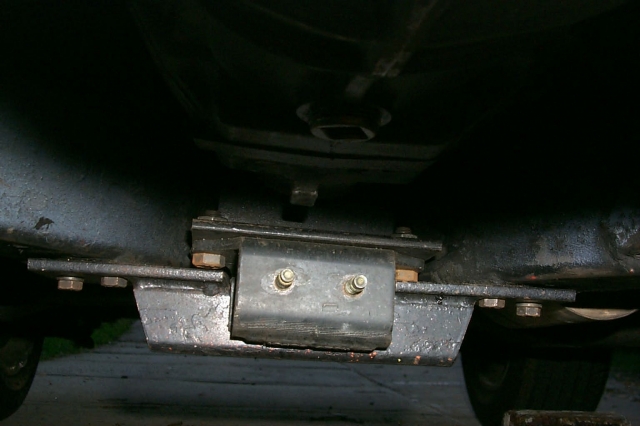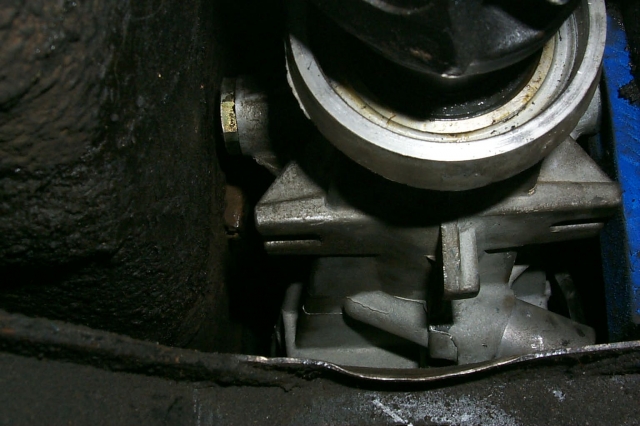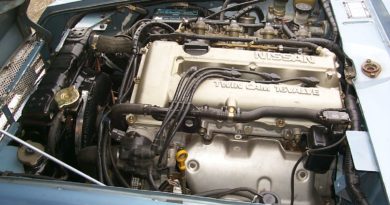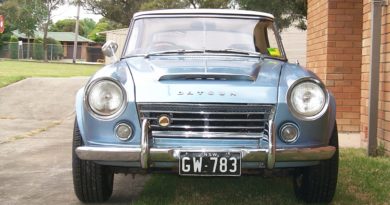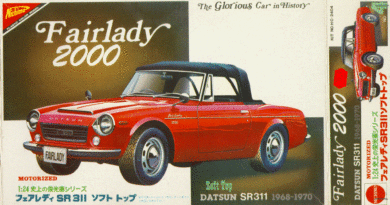Position Position Position Project SR20
As well as being a very tall engine the SR20 has its oil pan at the front and I could see no reasonable way to move it to the back. This meant that if I was not going to cut the front cross member of the car to allow the engine to come forward it would have to go back as far as it could. As you can see from the photos of the engine bay it is back as far as it can go and not interfere with the plumbing to the heater to much though there is no easy access back there.
This is one of the many trial fitments in the car. From here I would fabricate engine mounts (tack welded) and do a trial fit, mark the required changes, grind off the tacks and reposition again. My aim way to do as little changes to the body and frame as possible.
The next photo shows how close the the oil pan flange comes to the cross-member.
This conversion has been done many times now and the preferred method is to cut the rear section out of the front X member. I would consider doing this when I revisit this conversion in the future.
Here we see the right hand side engine mount, i think it picks up the mounts were the AC was on the SR20. you can also see the alternator tucked in there, it’s off a small Subaru.
This is the left hand engine mount, picking up the mounts originally for the alternator on the SR20 and the original R16 mount point, R16 engine isolators are also used.
Not to forget the rear mount for the gearbox, this proved a bit tricky as the mount points on the SR20 5 speed were rearward of the original mounts on the chassis.I kind of stepped bracket was devised and implemented. This is not a real good picture, the SR20 rear isolator is used and a mount made to fix to the chassis as well as the stepped bracket which can’t be seen going rearward (into the photo) from the mount to the gearbox.
Here is the view from the tail shaft looking forward and you can see how little room there is. Due the engine torque leaning the engine to the right (drivers perspective) under hard acceleration I had put some insulating material in there to determine the source of a rattle, it has since been removed. When completed the shifter comes through the floor in the same position as the original.

